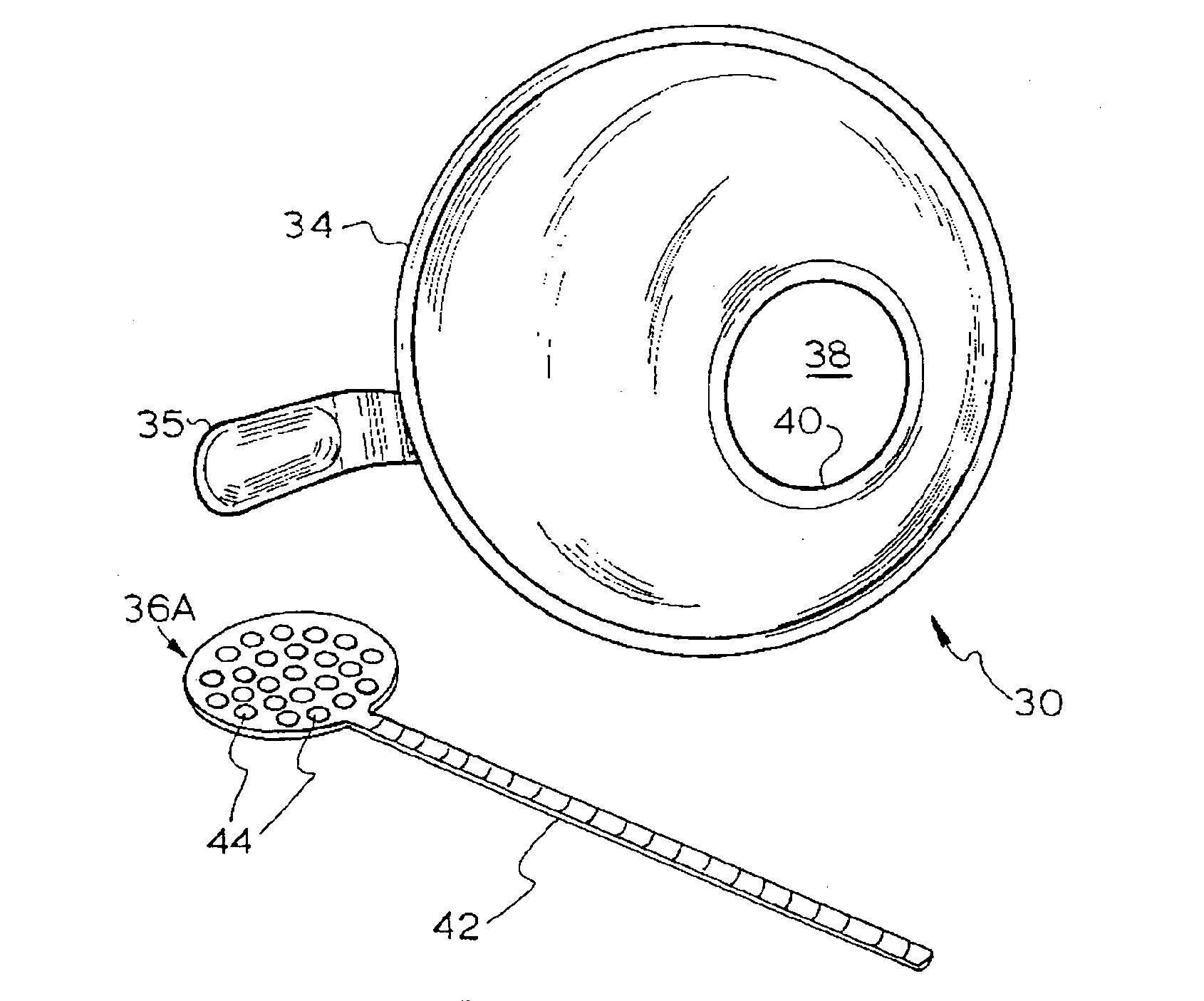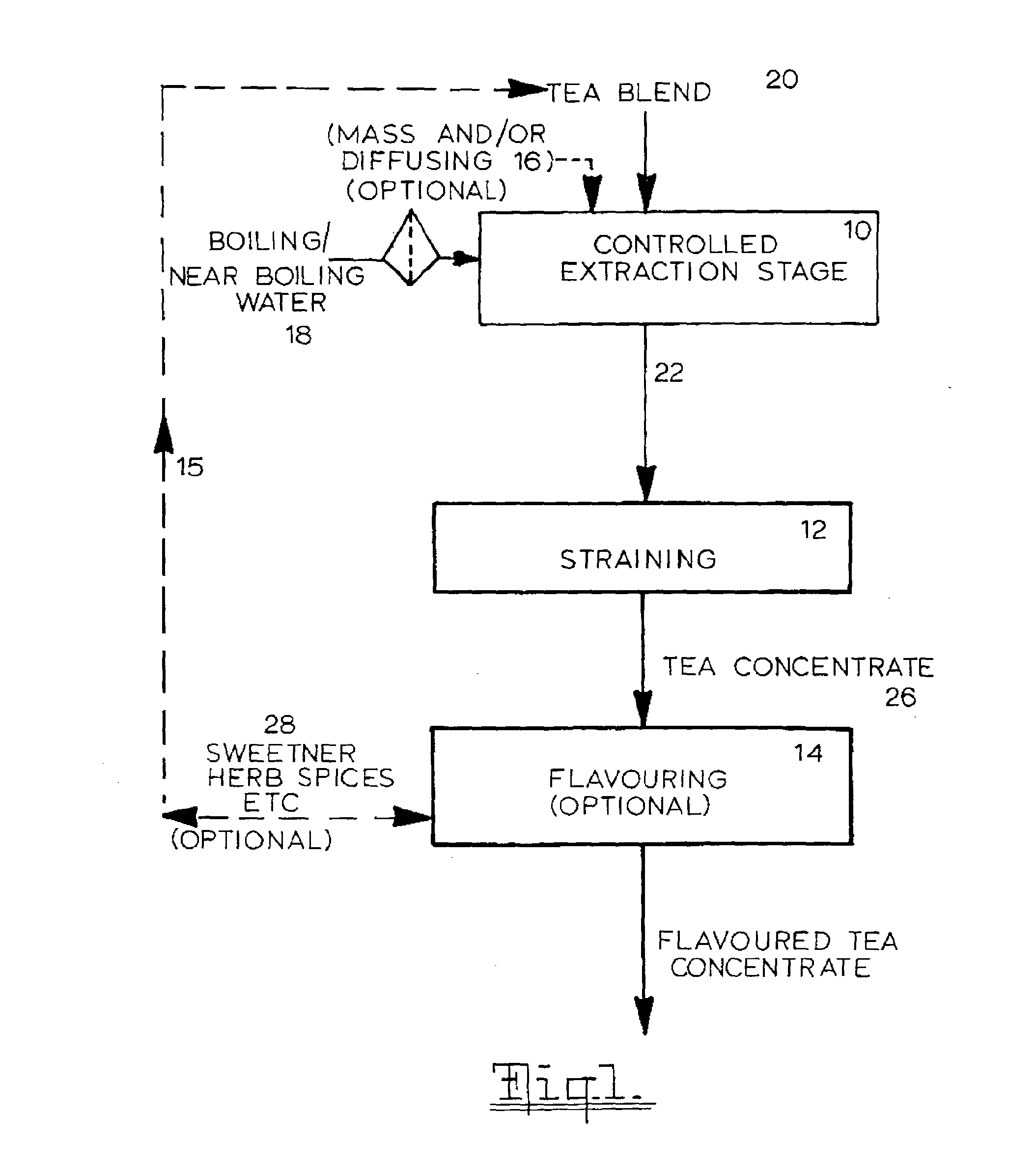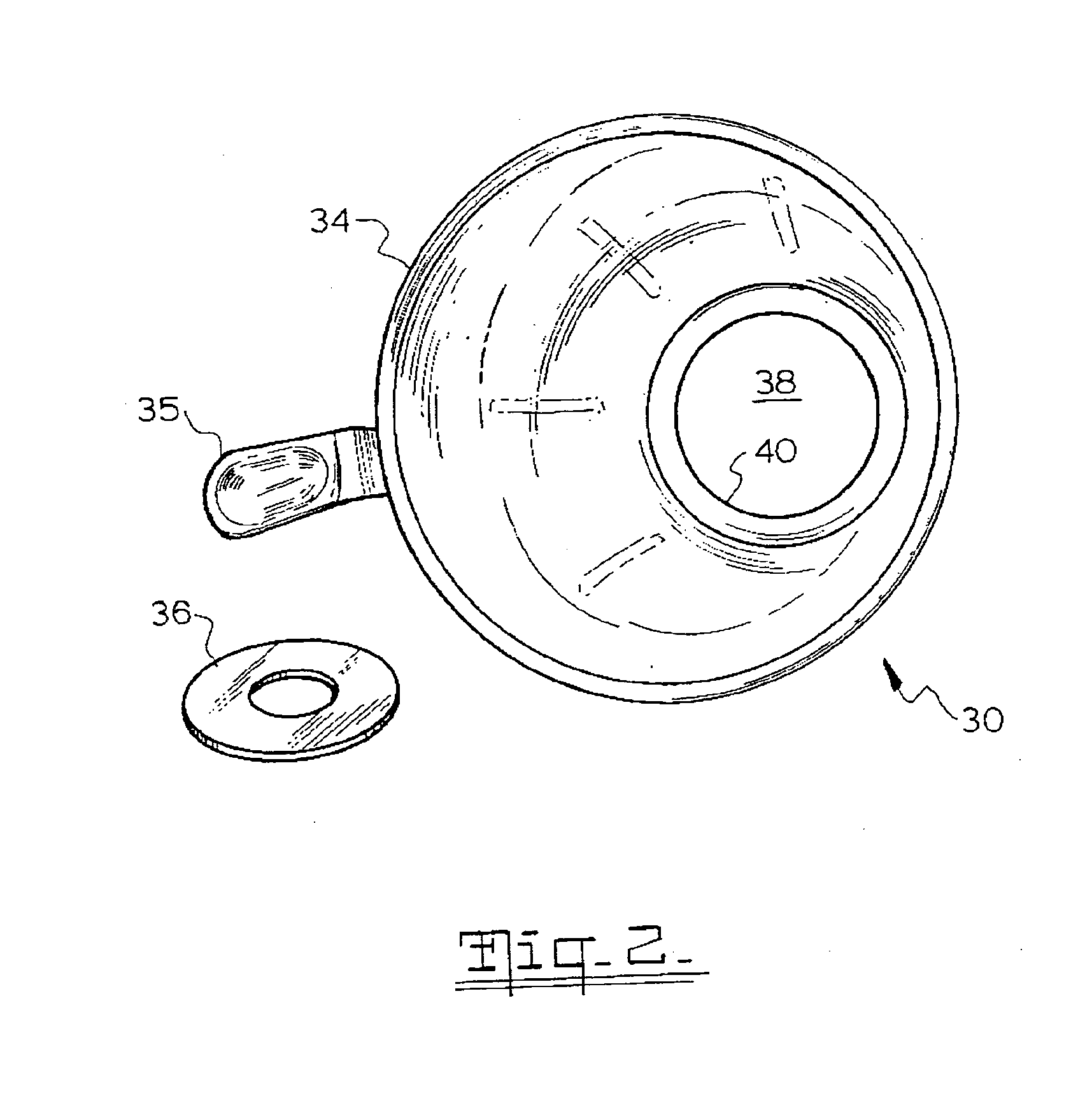Methods and apparatus for making a tea concentrate
a tea concentrate and apparatus technology, applied in the field of tea concentrate making methods and apparatuses, can solve the problems of significant tea steeping and extraction, increased tannins becoming harder to mask and thus more detectable to consumers, and achieving the effect of convenient tea concentrate making
- Summary
- Abstract
- Description
- Claims
- Application Information
AI Technical Summary
Benefits of technology
Problems solved by technology
Method used
Image
Examples
example 1
[0093]A trial was carried out using 9 grams of pekoe fannings having a broken leaf size of between 20 to 24 mesh, as measured using the Tyler sieve series (i.e. 20 to 24 holes per square inch), to determine the quality of the tea concentrate when using boiling water. The pekoe fannings were placed in a frusto-conical filter having a very fine mesh and having a restricted outlet. Boiling water was prepared, using a kettle, and approximately 70 mls was poured directly onto the pekoe fannings with an extraction time of 20-25 seconds. The resultant permeate produced passed through the filter and was thus separated from the pekoe fannings to provide about 30 mls of a tea concentrate in its final form. The tea concentrate produced by this method had a strong flavour and did not have a strong tannin bitterness.
example 2
[0094]A trial was carried out using 10 grams of pekoe fannings having a broken leaf size of between 20 to 24 mesh, as measured using the Tyler sieve series, to determine the quality of the tea concentrate when using near boiling water sourced from an espresso machine. The pekoe fannings were first ground to reduce their size and then placed in a conical filter having a very fine mesh and having a restricted outlet. Near boiling water was sourced in free flow from the hot water outlet of the espresso machine. Approximately 40 mls of near boiling water was poured directly onto the pekoe fannings to allow an extraction time of 25-30 seconds. The resultant permeate produced passed through the filter where it was separated from the pekoe fannings to provide the tea concentrate in its final form. The tea concentrate produced by this method had a strong flavour and did not have a strong tannin bitterness.
example 3
[0095]A trial was carried out using 10 grams of leaf blend of orange fannings and rose petals having a broken leaf size of between 18 to 20 mesh, as measured using the Tyler sieve series, to determine the quality of the tea concentrate when using a leaf blend. The leaf blend was placed in a conical filter having a very fine mesh and having a restricted outlet. In a similar manner to Example 1, boiling water was prepared using a kettle. Approximately 70 mls of boiling water was poured directly onto the leaf blend with an extraction time of 30-40 seconds. The resultant permeate produced passed through the filter where it was separated from the leaf blend to provide about 40 mls of the tea concentrate in its final form. Again, the tea concentrate produced by this method had a strong flavour and did not have a strong tannin bitterness.
PUM
 Login to View More
Login to View More Abstract
Description
Claims
Application Information
 Login to View More
Login to View More - R&D
- Intellectual Property
- Life Sciences
- Materials
- Tech Scout
- Unparalleled Data Quality
- Higher Quality Content
- 60% Fewer Hallucinations
Browse by: Latest US Patents, China's latest patents, Technical Efficacy Thesaurus, Application Domain, Technology Topic, Popular Technical Reports.
© 2025 PatSnap. All rights reserved.Legal|Privacy policy|Modern Slavery Act Transparency Statement|Sitemap|About US| Contact US: help@patsnap.com



